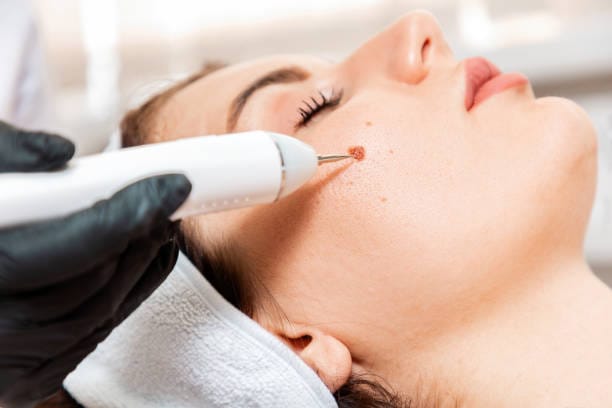Moles
Introduction
Growths on the skin known as moles are typically dark or black in colour. The majority of individuals have at least a few moles, which are a common type of skin lesion that can appear anywhere on the body. Moles typically have a round or oval form and can be raised or flat. Melanocytes, the skin cells that produce color, cluster together to form moles. Although the precise reason why some people have more moles than others is not fully understood, it is thought that sun exposure and genetics may play a role. Most moles are benign, which means they don’t cause disease and aren’t malignant. But some spots can progress into melanoma, a form of skin cancer.

Pathophysiology
Melanocytes, the skin pigment-producing cells, exhibit abnormal development and clustering as part of the pathophysiology of moles. The basal layer of the epidermis, the skin’s top layer, is where melanocytes are found. Although the exact reason why some people have more moles than others is not completely understood, it is thought that sun exposure and genetics may play a role. Age, skin type, and hormonal changes are just a few examples of the variables that can affect the quantity and distribution of moles on the body. A family history of melanoma, sunburns, and having a lot of moles on the body all increase the risk of getting the disease. It is crucial to keep an eye out for any changes in a mole’s size, shape, or color, as well as any signs of itchiness, bleeding, or discomfort.
Signs and Symptoms
The majority of moles are innocuous and have no symptoms. They generally range in colour from light brown to dark brown or black, and are flat, raised, round, or oval in shape. Anywhere on the body, including the scalp, face, neck, back, arms, and legs, the epidermis can develop moles. In some cases, moles may cause symptoms such as:
- Moles may itch or heat, particularly if they are irritated by clothing or jewellery.
- Bleeding: Moles that have been scratched or hurt may haemorrhage.
- Color or size changes: A dermatologist should examine moles that change in color, size, or form.
- Moles with irregular or fuzzy edges may raise more red flags for melanoma.
- Scaliness or crusting: Scaly or crusty moles may be an indication of skin malignancy.
How do Dermatologists treat Moles?
Depending on the nature, size, and location of the mole, dermatologists can treat it using a variety of methods. The majority of moles are innocuous and don’t need to be treated, but some moles might need to be removed for aesthetic or medical reasons, like if there’s a possibility of skin cancer. Some common techniques used by dermatologists to remove moles include:
- Excision: Using a scalpel, the complete mole and surrounding skin are removed in this method. The region is then stitched shut.
- Shave removal: In this method, the mole is removed from the skin’s surface using a tiny razor. Usually, this method is applied to lesser moles.
- Laser removal: In this method, the melanin in the mole is broken down by a laser, which over time causes the mole to deteriorate.
- Cryotherapy: This method freezes the mole with liquid nitrogen, which results in blisters and the mole peeling off.
To establish whether the removed mole is cancerous or not, it may be sent for testing. If the mole is cancerous, extra treatment, such as surgery or therapy, may be required.





